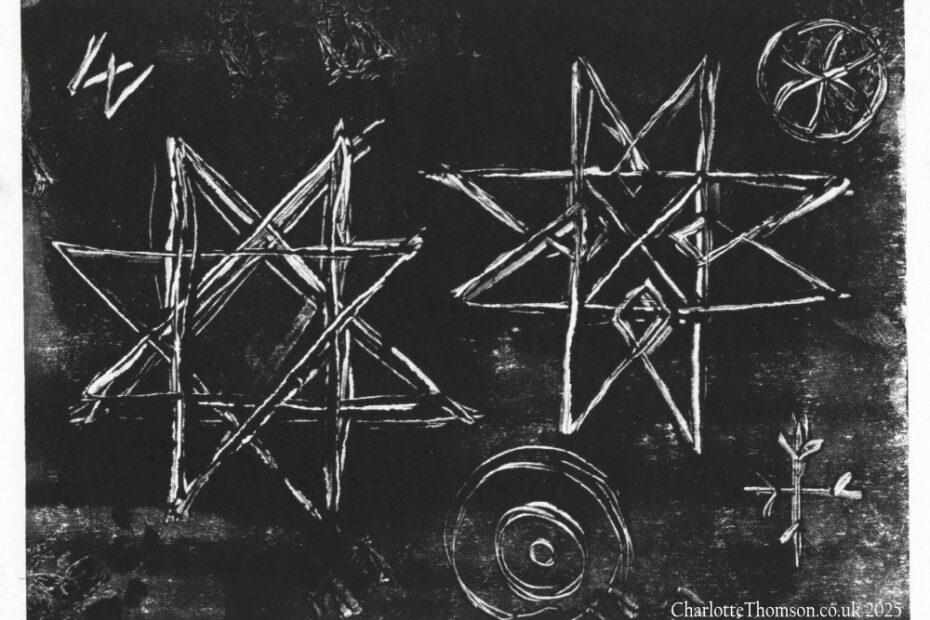What are ‘Witch Marks’?
My new series of mono-printed art is based on ‘Witch Marks’ found in the East Midlands.
‘Witch Marks’ are a name given to symbolic, protective marks made by people on buildings and sometimes furniture and cave walls. Mostly dating from the Medieval period to the early 19th Century, they are ‘apotropaic’ marks, meaning they protect the location and the people from a perceived threat of evil spirits and malevolent witchcraft.
The marks appear across the United Kingdom and often appear in entryways, doorframes, fire places, window frames and, in the case of Creswell Crags in Nottinghamshire, in systems of caves.
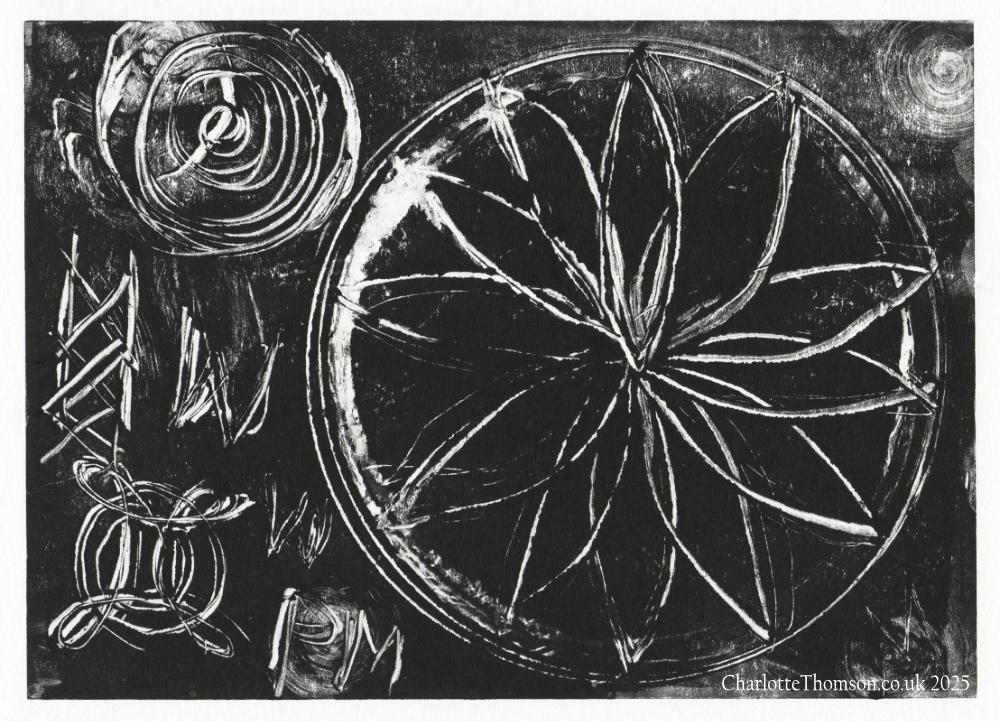
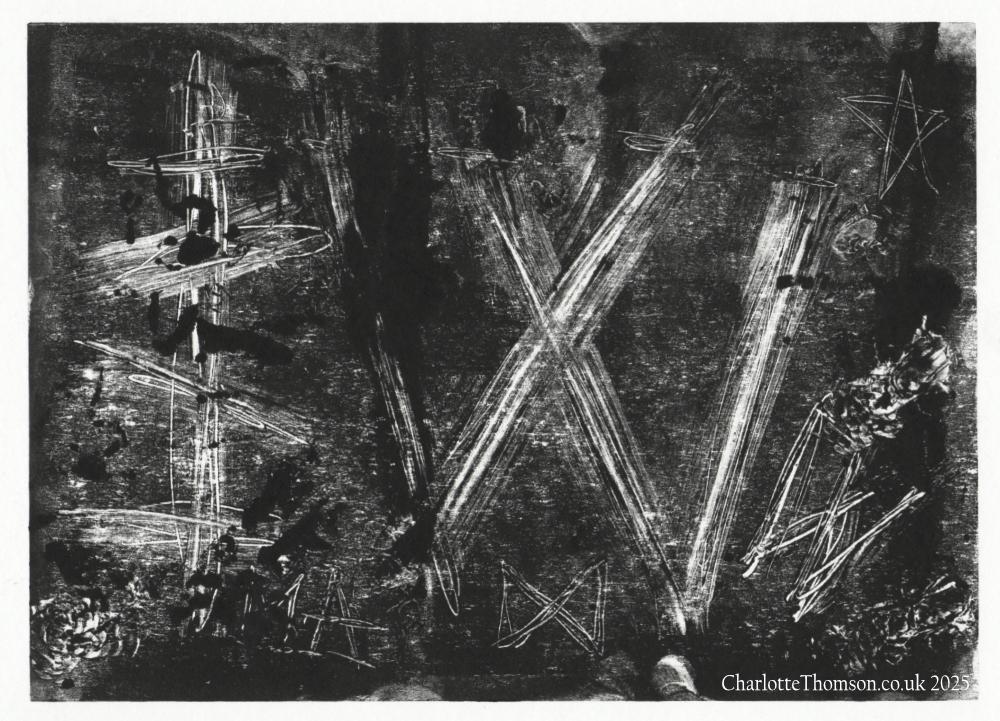
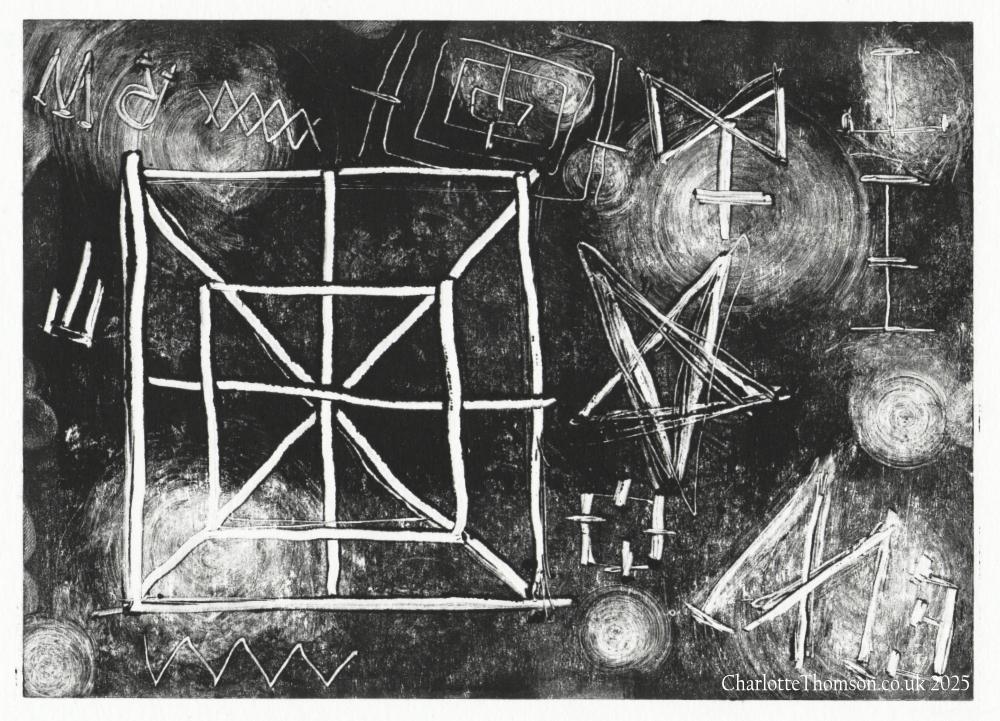
What do the different symbols mean?
A very commonly found ‘Witch mark’ is the symbol of the double ‘V’ meaning Virgin of Virgins. The crossed ‘I’ of Iesu/Jesus, the ‘M’ again relating to Mary & PM meaning Pax Maria.
Other symbols I have featured are traps for evil spirits. This includes the daisy wheel or hexfoil, a circle with petals. Designs that have geometric elements, concentric circles, straight lines, criss-crossed patterns and zig zags are designed to trap demons & evil spirits. Demons are unable to resist their compulsion to follow straight lines and get trapped by never ending shapes. This includes the Christian use of the Pentagram as a protective symbol.
How ‘What are your afraid of’ art was made and why –
I’m fascinated by the use of superstitious folk-magic devices such as ‘Witch Marks’ in the protection against the perceived threat of dark entities, demons and, particularly the invented threat of Witches. I’m especially interested when there is a connection to the East Midlands where I work and live.
I love exploring visual imagery and symbolism made by human hands. Recreating that mark-making can be an amazing learning tool, following in the footsteps of our ancestors and creating living history.
In mono-printing, a thin film of ink is applied to a reusable surface. The ink was then scratched into using different blunt tools to make marks, mimicking the way protective ‘Witch Marks’ would be scratched into stone or wood. The result is deliberately imperfect, textured like stone, sketched and scratched, hidden and revealed.
Mono-prints can only be printed once, so each piece of art is unique. I approached the work quickly and intuitively, sketching with the blunt end of a paintbrush & pencils. Wiping ink away using paintbrushes, tin foil and tissue paper. Drawing around circular objects and making marks by twisting them on the surface of the ink.
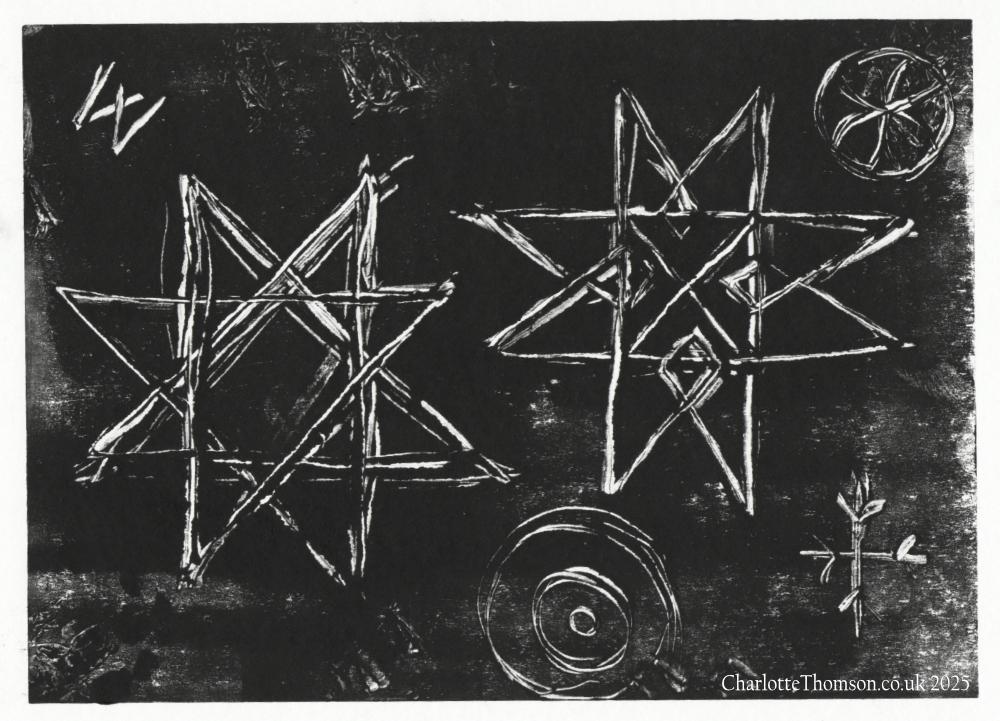
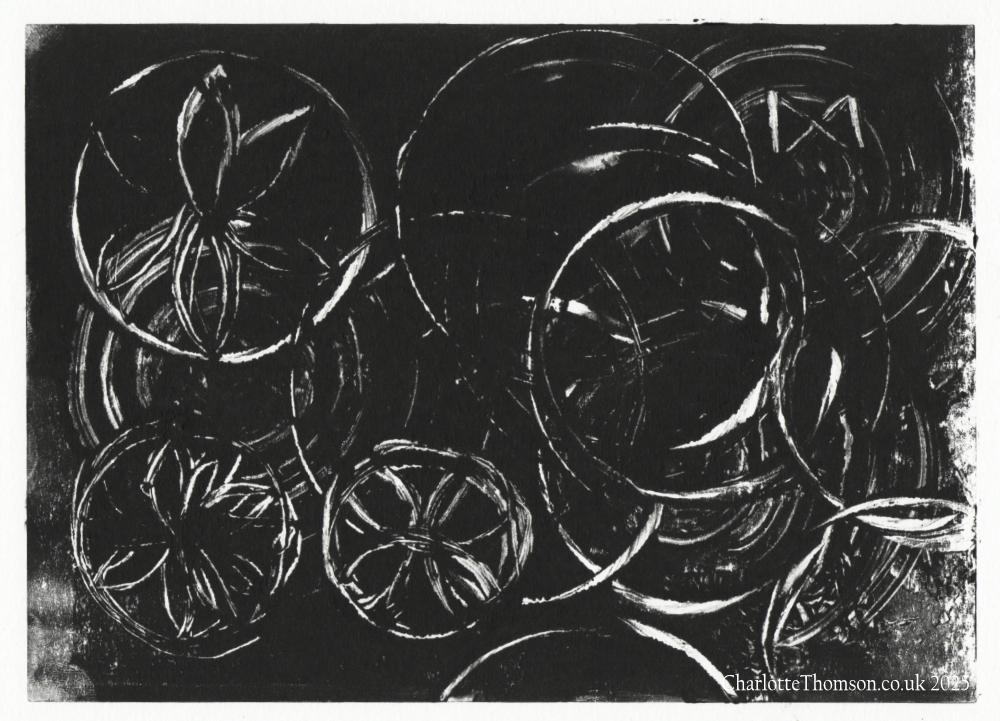
Posing the question – What were they afraid of?
During the time these marks were most commonly made, superstition and fear of ‘evil’ was rife.
Witch trials were taking place around the country, the East Midlands was no exception, and we can find a list of some of the accused at witchtrials.co.uk. In Nottinghamshire in 1597, the Puritan preacher John Darrell was stirring up fear from St Mary’s Church in the Lace Market (where coincidentally I used to be a choir-girl). He was later discovered to be a charlatan but not after riling up fear and division and sending several people to trial.
At Creswell Crags we find protective marks within the cave system. With stories of Witches and fear of evil spirits commonplace, were people trying to protect themselves from what they feared lurked in the depths of the caves?The legend of ‘Black Annis’, a witch who lived in a cave hails from just over the border in Leicestershire.
The potential of this project for future workshops
Mono-printing is a very accessible medium to work in and perfect for community workshops. I aim to translate this project into public art workshops in Nottingham in the near future. These pieces were printed using an easily portable, DIY craft printing press which can be taken out into the public at any location.
Where can I find ‘Witch Marks’ in Nottinghamshire & the East Midlands?
The marks I have featured in this series are inspired by marks found at Belton House – Lincolnshire &
Creswell Crags – Nottinghamshire, and other commonly occurring marks found nationwide.
Protective marks are commonly found in entranceways, entryway doorframes and window-frames of old churches, keep your eyes peeled when visiting.
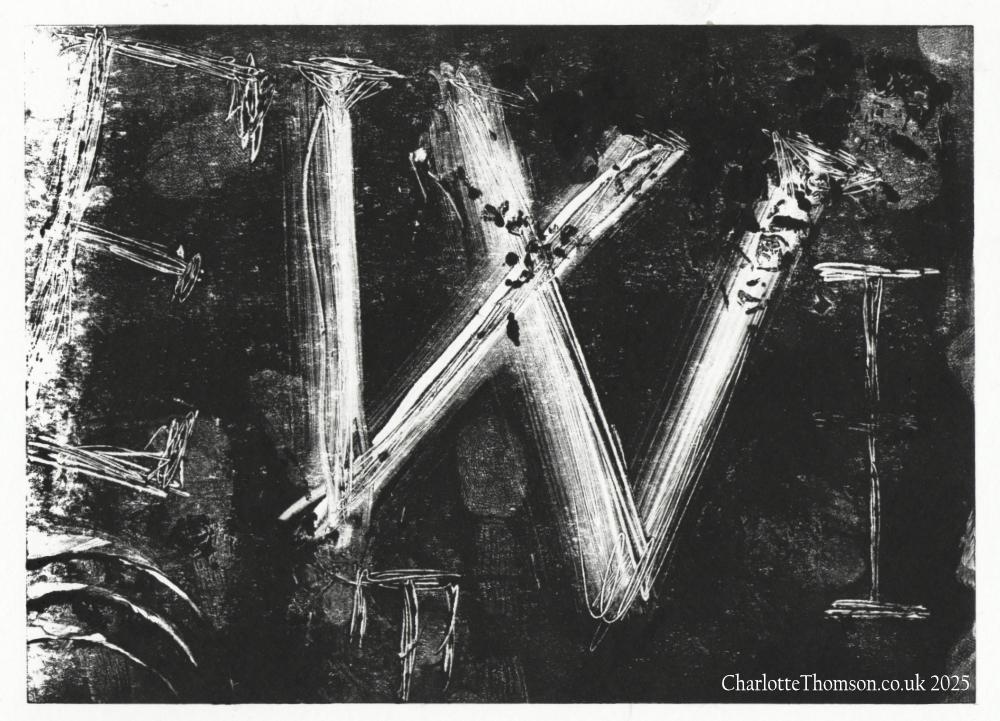
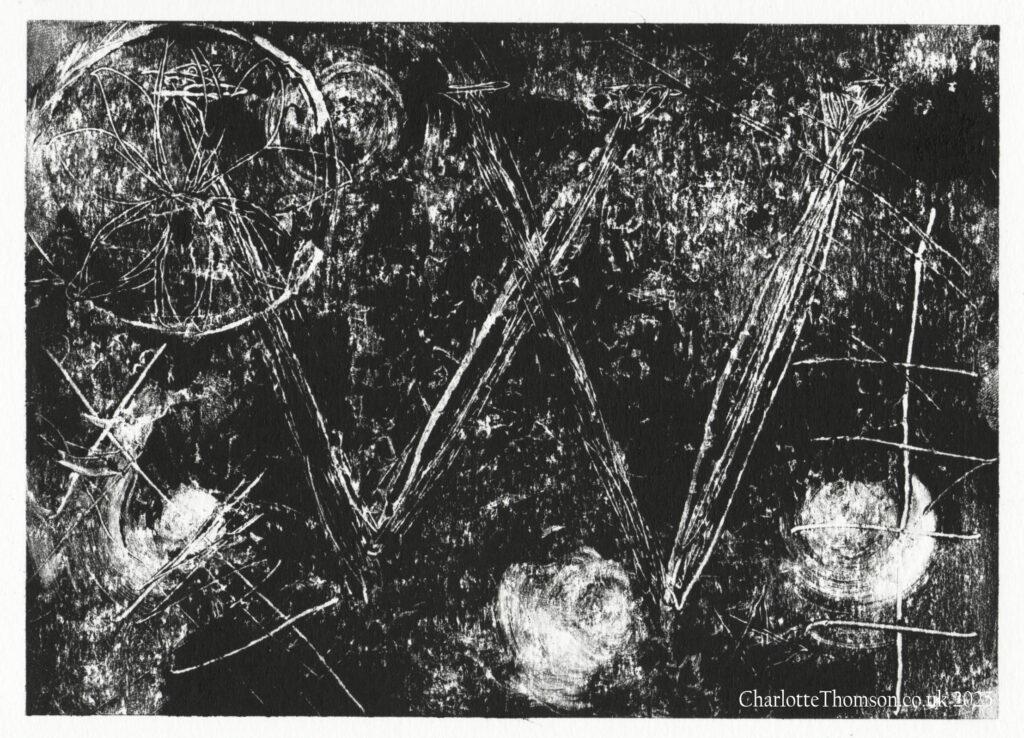
Sources & further reading
None of the following links are affiliate or sponsored in any way, they are simply useful resources and sources of information on the topics discussed in this blog post.
Creswell Crags
https://www.creswell-crags.org.uk/news-archive/hidden-witch-marks-revealed
https://www.creswell-crags.org.uk/news-archive/largest-discovery-of-witch-marks-in-britain-at-creswell-cragshttps://historicengland.org.uk/whats-new/news/witches-marks-discovery-largest-in-britain
About Apotropaic Marks
https://www.nationaltrust.org.uk/discover/history/warding-off-evil-with-witch-marks
https://historicengland.org.uk/whats-new/features/discovering-witches-marks/public-response
https://sites.google.com/site/charlesfaireyhistorian/publications/protective-devices-apotropaic-symbols-and-witch-marks
https://www.apotropaios.co.uk
Scholar Paula McBride speaking on apotropaic marks in the Midlands
https://youtu.be/k3TUz9hnbFc?si=cvZi6brMmfszsKMw
Nottinghamshire Witch Trials
https://leftlion.co.uk/features/2020/10/witchcraft-in-nottingham-history/
https://blogs.nottingham.ac.uk/manuscripts/2019/10/31/witches-of-eastmids/
http://www.witchtrials.co.uk/county.html
